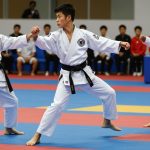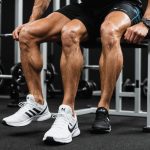Top Exercises to Boost Grip Strength for Rockstar Climbers: Unlock Your Climbing Potential!
Why Grip Strength Matters in Climbing
When it comes to climbing, grip strength is more than just a nice-to-have; it’s a must-have. Whether you’re tackling the rugged walls of Smith Rock in Oregon, the scenic routes of Maple Canyon in Utah, or the challenging boulders of Ferguson Canyon, a strong grip can be the difference between reaching the summit and falling short.
“Grip strength is the foundation of climbing,” says Rand Abbott, a seasoned climber and instructor. “Without it, you’re limited in what you can achieve. It’s not just about the physical aspect; it’s also about the mental confidence that comes with knowing you can hold onto the rock.”
Also to see : Top Strategies to Boost Coordination and Agility for Soccer Players
Understanding Grip Strength
Grip strength encompasses several types of grip, each crucial for different climbing techniques:
- Crimp Grip: Used for small holds, this grip involves bending your fingers to create a hook-like shape.
- Open-Hand Grip: Used for larger holds, this grip involves spreading your fingers to maximize surface contact.
- Pocket Grip: Used for holds with holes or pockets, this grip involves inserting your fingers into the hold.
- Pinch Grip: Used for holds that require a pinching motion, often seen in bouldering.
Best Exercises for Improving Grip Strength
Exercises Without Equipment
You don’t need a gym or specialized equipment to start improving your grip strength. Here are some simple yet effective exercises you can do anywhere:
In parallel : Boosting the Court: How Caffeine Impacts a Tennis Player”s Performance on Game Day
The Cat Claw Exercise
- How to do it: Extend your fingers and then curl them into a claw-like shape, as if you’re imitating a cat’s claws. Repeat this motion 10 times, do three sets, and repeat several times a day.
- Benefits: Activates the muscles in your palm and the tendons in your fingers.
Finger Spreads
- How to do it: Place your hand flat on a table and lift each finger as high as possible while keeping your palm on the surface. Hold for a few seconds, then release. Repeat this exercise several times.
- Benefits: Strengthens the back of your hand and the tendons in your fingers.
Thumb Presses
- How to do it: Open your hand and press each finger against your thumb, applying firm pressure for a few seconds. This is ideal for gaining strength and control, especially if you’ve injured a finger.
- Benefits: Enhances finger strength and thumb opposition.
Table Edge Exercise
- How to do it: Place only the tips of your fingers on the edge of a table and press down, holding for 10 seconds. Release and repeat.
- Benefits: Strengthens your grip and finger tips.
Exercises With Equipment
While the exercises above are effective, using specialized equipment can accelerate your progress and provide more targeted training.
Resistance Bands
- How to use: Wrap a resistance band around your fingers and spread them apart to work against the resistance. Do three sets of 10 repetitions.
- Benefits: Provides adjustable resistance levels to challenge your grip progressively.
Hand Grip Strengtheners
- How to use: Squeeze the grip strengthener and release. Adjust the resistance to suit your level. Repeat the motion several times.
- Benefits: Develops a powerful grip and forearm strength.
Stress Balls
- How to use: Squeeze the stress ball with the tips of your fingers to target the muscles in your hand. This is discreet and can be done anywhere.
- Benefits: Improves finger strength and dexterity.
Putty or Malaxer
- How to use: Use putty or malaxer to perform various hand exercises like squeezing, stretching, and manipulating the material. This improves both strength and flexibility.
- Benefits: Enhances hand strength, flexibility, and dexterity.
Integrating Grip Training into Your Climbing Routine
Climbing-Specific Exercises
In addition to the exercises mentioned above, you can adapt your climbing routine to focus more on grip strength:
Hangboards
- How to use: Hang from a hangboard using different grip positions (crimp, open-hand, pocket). Start with shorter hangs and gradually increase the duration.
- Benefits: Simulates climbing holds and targets specific grip types.
Campus Boards
- How to use: Use a campus board to perform foot-on and foot-off exercises, focusing on dynamic movements that challenge your grip.
- Benefits: Improves grip strength, finger dexterity, and overall climbing technique.
Bouldering and Short Climbs
- How to do it: Focus on shorter climbs or bouldering routes that require intense grip strength over a shorter period.
- Benefits: Builds explosive grip strength and endurance.
A Comprehensive Training Guide
Here’s a sample weekly training plan to help you integrate grip strength exercises into your climbing routine:
| Day | Morning Session | Afternoon Session |
|---|---|---|
| Monday | Warm-up: Finger spreads, thumb presses | Climbing: Focus on crimp grips |
| Grip training: Resistance bands (3 sets) | Hangboard training (3 sets of 10 seconds) | |
| Tuesday | Warm-up: Table edge exercise | Climbing: Focus on open-hand grips |
| Grip training: Hand grip strengtheners (3 sets) | Campus board training (foot-on exercises) | |
| Wednesday | Rest day | |
| Thursday | Warm-up: Cat claw exercise | Climbing: Focus on pocket grips |
| Grip training: Putty or malaxer (3 sets) | Bouldering (short, intense climbs) | |
| Friday | Warm-up: Finger spreads | Climbing: Mixed grip types |
| Grip training: Stress balls (3 sets) | Hangboard training (mixed grip types) | |
| Saturday | Outdoor climbing or bouldering | |
| Sunday | Rest day |
Real-Life Examples and Success Stories
Dave Barnes, a professional climber, attributes his success to a rigorous grip training regimen. “I started seeing significant improvements in my climbing performance after I incorporated grip training into my daily routine. It’s not just about the physical gains; it’s also about the mental confidence that comes with knowing you have the strength to hold on,” he says.
Adaptive Climbing and Grip Strength
For climbers with injuries or disabilities, adaptive climbing techniques and specialized equipment can be game-changers. “Adaptive climbing is all about finding new ways to engage with the sport,” says a photographer and climber who specializes in capturing adaptive climbing stories. “Grip strength is still crucial, but it’s about adapting your techniques and using the right equipment to overcome challenges.”
Building grip strength is a journey that requires consistent training, patience, and the right techniques. Whether you’re a common climber looking to improve your skills or an elite athlete aiming for the top, incorporating these exercises into your routine can significantly enhance your climbing potential.
As Rand Abbott puts it, “Grip strength is not just a physical attribute; it’s a mental one too. When you know you have the strength to hold on, you climb with more confidence and precision. It’s a game-changer.”
So, start your grip strength training today, and watch your climbing profile soar to new heights. Whether you’re climbing in Australia, tackling the red rock formations of Utah, or exploring the bouldering areas of Maple Canyon, a strong grip will be your best ally on the rock.











